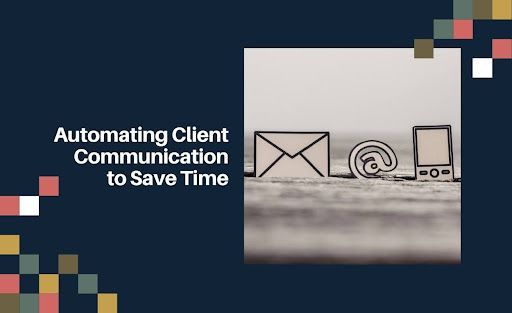The Role of Personalization in Improving Client Experience
Personalization has become a crucial aspect of client experience in today's highly competitive market. Businesses are realizing the importance of tailoring their offerings to meet the unique needs and preferences of individual clients. By understanding the role of personalization in client experience, companies can enhance customer satisfaction , increase client retention, and ultimately drive long-term business growth.
Understanding Personalization in Client Experience
To truly appreciate the impact of personalization, it's important to define the concept within a business context. Personalization refers to the customization of products, services, and experiences to meet the specific needs and preferences of individual clients. It involves understanding and anticipating clients' desires , and delivering tailored solutions that resonate with them on a personal level.
Today's consumers expect personalized experiences. They want to feel valued and understood by the businesses they interact with. This requires companies to go beyond generic offerings and provide customized solutions that address each client's unique requirements.
But what does personalization really mean in a business context? It goes beyond simply addressing clients by name or offering basic recommendations. It involves a deep understanding of each client's preferences, behaviors, and pain points. By leveraging data and insights, businesses can create personalized experiences that are relevant, meaningful, and valuable to their clients.
Imagine a scenario where a client visits an online store. Through the use of advanced analytics and machine learning algorithms, the store is able to recommend products that align with the client's past purchases, browsing history, and preferences. The client feels understood and valued, as if the store knows them personally. This level of personalization not only enhances the client's experience but also increases the likelihood of a purchase.
Personalization can manifest in various forms, such as tailored product recommendations, personalized marketing messages , customized pricing, and personalized customer support. Each touchpoint with the client presents an opportunity to create a personalized experience that enhances their overall satisfaction.
For instance, a clothing retailer can send personalized marketing messages to clients based on their previous purchases and style preferences. By showcasing new arrivals that align with the client's taste, the retailer increases the chances of the client making a purchase. Similarly, a software company can offer customized pricing plans to different clients based on their specific needs and budget constraints. This not only makes the pricing more attractive but also demonstrates a deep understanding of the client's business.
In today's market, personalization is more than just a competitive advantage; it has become a necessity. With the rise of digitalization, clients have access to a vast array of options and information. They expect businesses to understand their needs and provide solutions that cater to their specific requirements.
By embracing personalization, companies can differentiate themselves from their competitors. They can establish strong connections with their clients, gain their loyalty, and ultimately drive business growth. Personalization is no longer a luxury; it's a strategic imperative for businesses operating in the digital age.
Consider a scenario where two online retailers offer similar products at similar prices. However, one retailer provides a personalized shopping experience, while the other offers a generic one. The retailer that offers personalization is more likely to attract and retain clients, as they feel understood and valued. This can lead to increased customer loyalty, positive word-of-mouth, and ultimately, higher revenue.
Furthermore, personalization can also help businesses optimize their marketing efforts. By understanding each client's preferences and behaviors, companies can tailor their marketing messages to resonate with their target audience. This increases the effectiveness of marketing campaigns, leading to higher conversion rates and return on investment.
In conclusion, personalization is a powerful tool that businesses can leverage to enhance client experience and drive growth. By understanding and anticipating clients' needs, delivering tailored solutions, and creating personalized experiences, companies can establish strong connections with their clients and gain a competitive edge in the digital age.
The Impact of Personalization on Client Experience
Personalization has a profound impact on client experience. By tailoring offerings to individual clients, businesses can significantly enhance customer satisfaction and create lasting impressions that foster loyalty and advocacy.
Enhancing Client Satisfaction through Personalization
Personalization allows businesses to provide clients with products, services, and experiences that align with their specific desires and preferences. This level of customization can result in higher levels of satisfaction and delight among clients, as they feel their needs are being met in a highly personalized manner.
For example, imagine a clothing store that offers personalized styling sessions for each client. During these sessions, professional stylists take the time to understand the client's fashion preferences, body type, and lifestyle. Armed with this information, the stylists curate a selection of outfits that are perfectly suited to the client's individual taste and needs. This personalized experience not only ensures that the client leaves the store feeling confident and satisfied with their purchases but also creates a memorable and positive impression of the brand.
By consistently delivering personalized experiences, businesses can build strong emotional connections with their clients. These connections not only improve satisfaction but also increase the likelihood of repeat purchases and positive word-of-mouth recommendations.
Personalization and Client Retention
Client retention is crucial for sustainable business growth. Personalization plays a pivotal role in improving client retention rates. By personalizing offerings, businesses can foster a sense of loyalty and commitment among their clients.
Take, for instance, a subscription-based meal kit service. By collecting data on each client's dietary preferences, allergies, and cooking skills, the service can personalize the weekly meal plans sent to each subscriber. This level of personalization ensures that the client receives meals that cater to their specific needs and tastes, increasing their satisfaction and likelihood of remaining a loyal customer.
When clients feel that a company understands and values them as individuals, they are more likely to remain loyal to that brand. Personalization creates a unique bond between the client and the business, which can act as a strong deterrent against switching to competitors.
In addition, personalized experiences have a positive impact on client lifetime value. When clients are highly satisfied and feel valued by a business, they are more likely to engage in repeat purchases and become ambassadors for the brand.
For example, a luxury hotel that offers personalized concierge services can create an unforgettable experience for its guests. By anticipating their needs and preferences, the hotel staff can provide tailored recommendations for local attractions, restaurants, and activities. This level of personalization not only enhances the guest's stay but also increases the likelihood of them returning to the hotel in the future and recommending it to their friends and family.
In conclusion, personalization is a powerful tool for businesses to enhance client experience. By customizing offerings to meet individual needs and preferences, businesses can improve client satisfaction , foster loyalty, and increase client retention rates. The impact of personalization goes beyond immediate satisfaction, as it can lead to long-term advocacy and positive brand associations.
The Process of Implementing Personalization
Implementing personalization involves a systematic approach that requires businesses to understand client preferences and leverage technology to deliver personalized experiences. By following a well-defined process, companies can effectively implement personalization strategies.
Identifying Client Preferences for Personalization
The first step in implementing personalization is understanding client preferences. This involves collecting and analyzing data to gain insights into clients' behaviors, preferences, and pain points. Through surveys, interviews, and data analysis, businesses can tailor their offerings to meet the unique needs and desires of their clients.
It's essential to ensure transparency and obtain clients' explicit consent when collecting and utilizing their data. Respecting privacy and adhering to data protection regulations is crucial for maintaining trust and credibility.
Utilizing Technology for Personalization
Technology plays a pivotal role in enabling personalization at scale. By leveraging customer relationship management (CRM) systems, data analytics tools, and artificial intelligence (AI) algorithms, businesses can analyze vast amounts of client data to gain insights and deliver personalized experiences.
From recommendation engines to personalized marketing automation, technology empowers businesses to automate and streamline personalization efforts. Real-time data analysis allows businesses to deliver relevant and timely offers, recommendations, and content to each individual client, enhancing their overall experience.
Measuring the Success of Personalization
Measuring the success of personalization efforts is crucial to evaluate the effectiveness of the implemented strategies and identify areas for improvement. Key performance indicators (KPIs) can help businesses track the impact of personalization on client experience and business outcomes.
Key Performance Indicators for Personalization
Common KPIs for measuring the success of personalization include client satisfaction scores, client retention rates, average order value, and customer lifetime value. By monitoring these metrics, businesses can assess the impact of personalization on client experience and identify opportunities for optimization.
The Long-term Benefits of Personalization
Personalization not only improves client experience in the short term but also provides long-term benefits for businesses. By consistently delivering personalized experiences, companies can establish a loyal customer base, drive client advocacy, and generate positive word-of-mouth recommendations.
Furthermore, personalization creates a virtuous cycle of feedback and improvement. By continuously collecting and analyzing client data, businesses can refine their personalization strategies, leading to even more tailored and impactful experiences.
Overcoming Challenges in Personalization
While personalization offers significant benefits, it also presents challenges that businesses must overcome to effectively implement and sustain personalized experiences.
Addressing Privacy Concerns in Personalization
Privacy concerns are paramount when implementing personalization strategies. Clients need to trust businesses with their data and feel confident that it will be handled securely and responsibly. To address privacy concerns, businesses should be transparent about their data collection practices, obtain explicit consent, and comply with relevant data protection regulations.
Balancing Personalization and Standardization
Another challenge in personalization is striking the right balance between customization and standardization. While personalization aims to deliver tailored experiences, businesses must also ensure consistency and standardization across their offerings.
Standardization is necessary to maintain brand identity, ensure quality, and optimize operational efficiency. Balancing personalization and standardization involves identifying areas where customization is most effective while defining standardized processes that underpin personalized experiences.
In conclusion, personalization plays a crucial role in improving client experience. By understanding client preferences, leveraging technology, and measuring the impact of personalized experiences, businesses can enhance client satisfaction, drive client retention, and achieve long-term success in today's competitive market. To overcome challenges in personalization, businesses must prioritize privacy concerns and find the right balance between customization and standardization. By embracing personalization, businesses can forge meaningful connections with their clients and create experiences that go beyond expectations.
More from Pixifi











